Digital Poster
RF Arrays & Systems
ISMRM & ISMRT Annual Meeting & Exhibition • 10-15 May 2025 • Honolulu, Hawai'i

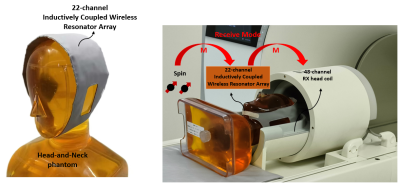 |
Computer Number: 129
3312. A
Dense Inductively Coupled Wireless Resonator Array for fMRI of
Somatosensory and Motor Cortex at 5T
Z. Wei, Z. Zhang, Q. Chen, C. Wang, X. Zhang, H. Zheng, Y.
Li
Lauterbur Imaging Research Center, Shenzhen Institute of Advanced Technology, Chinese Academy of Sciences, Shenzhen, China
Impact: This study is to design and implement a dense
inductively coupled wireless resonator array (ICWRA) to
enhance functional MRI signal sensitivity in the human
somatosensory and motor cortex.
|
|
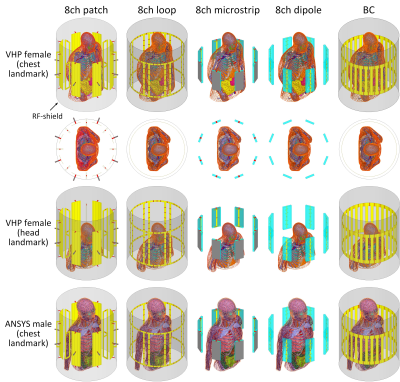 |
Computer Number: 130
3313. Analysis
of patch, dipole, microstrip, and loop Tx arrays as a bore-tube
integrated 7T body coil
E. Kazemivalipour, J. Drago, L. Wald
Massachusetts General Hospital, Charlestown, United States
Impact: Our findings suggest that the patch pTx array
can improve 7T body MRI by enhancing transmit efficiency and
stability while maintaining SAR safety. Development of such
an array could enable facilitate clinical body imaging at
7T.
|
|
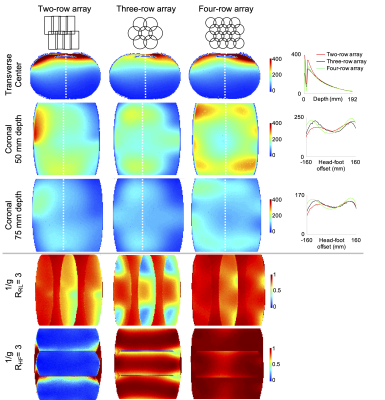 |
Computer Number: 131
3314. Four-row
MR-linac receive array with remote circuitry to preserve
radiation transparency
K. Lakshmanan, L. Phillips, J. Walczyk, R. Brown
New York University Grossman School of Medicine, New York, United States
Impact: High performance, multi-directional parallel
imaging enabled by remote circuits in a four-row array can
potentially support MR-linac applications that require rapid
imaging and high SNR.
|
|
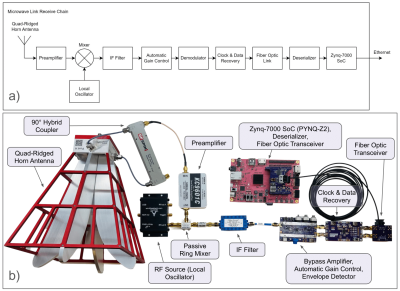 |
Computer Number: 132
3315. A
Prototype Microwave Link for a Wireless MRI Coil Array
R. Rosenberg, E. Turan, F. Robb, S. Vasanawala, J. Pauly, G.
Scott
Stanford University, Stanford, United States
Impact: This microwave link prototype brings us closer
to a wireless MRI system, which will streamline the imaging
process by enabling faster and more effective positioning of
the coil array on the patient, reducing scan times and
improving patient comfort.
|
|
 |
Computer Number: 133
3316. Piecing
Coils Together: A Wearable Modular Head Coil Design
R. Aghabagheri, E. Fischer, J. Gerlach, Z. Liu, M.
Shafiekhani, M. Bock, A. Özen
University Medical Center Freiburg, University of Freiburg, Freiburg, Germany
Impact: The concept of a wearable and flexible modular
coil arrays is demonstrated, where the elements are
positioned together without any geometric adjustment or
decoupling electronics. The modular design simplifies coil
array construction and offers more flexibility in anatomical
coverage.
|
|
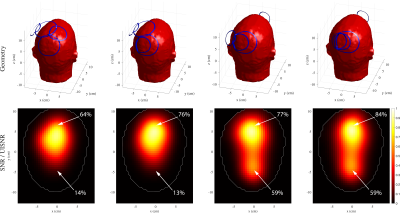 |
Computer Number: 134
3317. A
Fully Automatic Pipeline to Optimize Radio-Frequency Coil Design
Using the Ultimate Intrinsic Signal-to-Noise Ratio as the
Benchmark
J. Cruz Serrallés, I. Giannakopoulos, S. Wang, D. Chen, X.
Zhao, D. Zint, D. Panozzo, D. Zorin, R. Lattanzi
New York University Grossman School of Medicine, New York, United States
Impact: Optimizing the design of receive coil arrays can
improve image quality and parallel imaging performance. This
work demonstrates the first fully automatic approach to
design receive coils that can approach the ultimate
intrinsic signal-to-noise ratio.
|
|
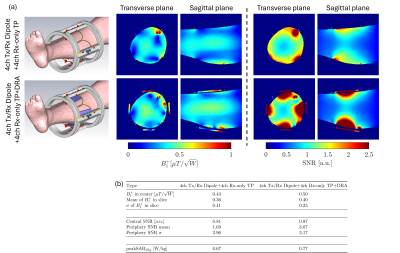 |
Computer Number: 135
3318. Flexible,
twisted-pair coil array with dielectric resonators and
transceiver dipole antennas for enhanced sensitivity in MRI at
7T
D. Wenz, J. Vliem, M. Widmaier, L. Xin, I. Zivkovic
CIBM Center for Biomedical Imaging, Lausanne, Switzerland
Impact: This new approach can substantially boost
receive performance of flexible RF coils tailored for
various clinical applications.
|
|
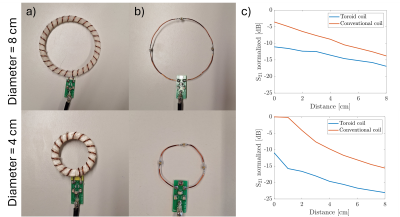 |
Computer Number: 136
3319. Self-decoupled
toroid coils for densely-packed receive arrays at 3T MRI
L. Budé, J. Vliem, I. Zivkovic
University of Technology Eindhoven, Eindhoven, Netherlands
Impact: Self-decoupled toroidal RF-coils offer a
solution for creating densely-packed receive arrays at 3T,
eliminating the need for traditional decoupling techniques.
This design enables flexible coil arrangements and
simplifies the construction of densely-packed arrays,
potentially enhancing image quality and array scalability.
|
|
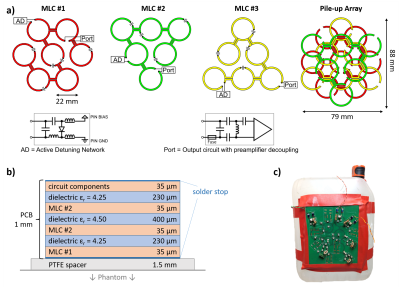 |
Computer Number: 137
3320. The
Multi-Loop Pile-Up Array: Concept and First Validation
Experiments
B. Rapp, V. Cap, A. Reich-Rohrwig, E. Laistler, C. Thibault,
J-C Ginefri, R. Frass-Kriegl
Medical University of Vienna, Vienna, Austria
Impact: A novel RF array concept - the multiloop pile-up
array - is introduced. First validation experiments
demonstrate high potential for superficial anatomical
targets like the skin and subcutaneous vasculature.
|
|
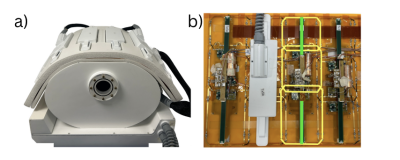 |
Computer Number: 138
3321. 7
Tesla prostate imaging with flexible body coil array
L. Hoxha, K. Papoutsis, S. McElroy, M. Kinnear-Nock, P.
Bridgen, P. Di Cio, M. Cleri, J. Hajnal, V. Goh, Ö. Ipek
Kings College London, London, United Kingdom
Impact: 7T torso parallel-transmit MRI is still under
ongoing development to improve coil technology for better
transmit efficiency and anatomical contrast. This study
presents a contribution to this quest using T2-weighted and
diffusion prostate images on an in-house-built 10Tx/30Rx
torso array.
|
|
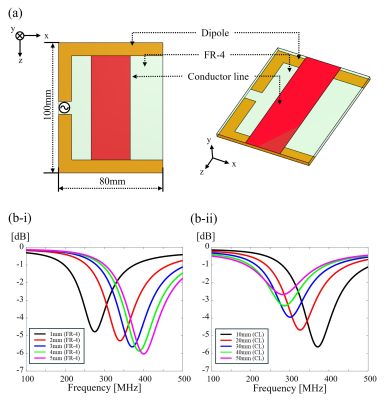 |
Computer Number: 139
3322. Design
of Self-decoupled Dipole Antenna for Ultra-high Field Magnetic
Resonance Imaging
T. Nam, E. Lee, D. Hernandez, H. Kim, C. Oh, Y. S. Jo, Y.
Ryu, Y. Han, J-Y Chung, K-N Kim
GAIHST, Gachon University, Incheon, Korea, Republic of
Impact: Our proposed dipole antenna can be reduced the
length in the z-axis direction and can be decoupled without
decoupling circuitries. The proposed design can effectively
be used in multi-channel array for brain or body application
in ultra-high field MRI.
|
|
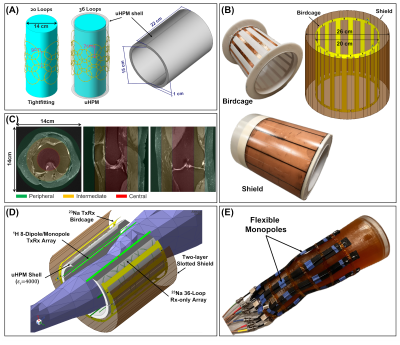 |
Computer Number: 140
3323. Multi-layer
RF coil design optimization for 23Na and 1H knee imaging at 7T
A. Sadeghi-Tarakameh, M. Waks, A. Bratch, Y. Eryaman, G.
Adriany, K. Ugurbil, J. Ellermann, G. Metzger
University of Minnesota, Minneapolis, United States
Impact: The proposed multi-layer RF coil offers an
SNR-optimized design for sodium imaging of the knee at 7T
providing the resolution needed for robust biomarkers to
diagnose and evaluate repair of damaged cartilage and
meniscal root tears, primary causes of osteoarthritis.
|
|
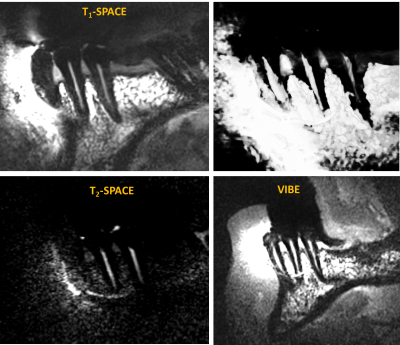 |
Computer Number: 141
3324. First
Intraoral Coil Array for Single-Tooth Dental MRI
A. Özen, T. Hilgenfeld, M. Bock
University Medical Center Freiburg, University of Freiburg, Freiburg, Germany
Impact: Intraoral coil arrays enable MRI of
sub-millimeter dental structures, while increasing the
spatial coverage in oral cavity. Compared to single-loop
coils, a more homogeneous receive sensitivity can be
achieved and parallel imaging is enabled.
|
|
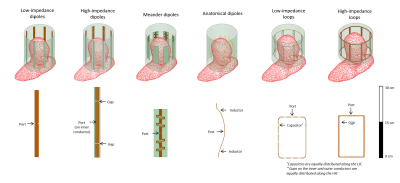 |
Computer Number: 142
3325. Finding
the optimal 8-TxRx array for a tight shielded brain coil at
11.7T: a simulation study

P-F Gapais, M. Luong, A. Amadon
Université Paris-Saclay, CEA, CNRS, NeuroSpin, BAOBAB, Gif-sur-Yvette, France
Impact: Our parallel arrays benchmarking of the
different Tx-Rx types at 11.7T provides new insights for UHF
coil development. It confirms previous findings claiming the
superiority of dipole-like elements over loops at UHF.
|
|
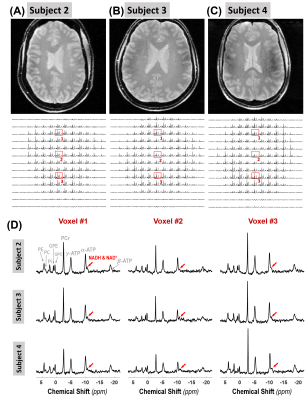 |
Computer Number: 143
3326. Novel
Dual-Tuned 31P-1H Transceiver Head Array Enables High-Resolution
Whole-brain 31P MRSI for Mapping NAD+ and NADH in the Human
Brain at 7T
X. Li, X-H Zhu, H. Wiesner, S. H. Soon, M. Waks, W. Chen
University of Minnesota, Minneapolis, United States
Impact:
The proposed 31P-1H head coil design provides excellent 1H MRI and whole-brain high-resolution 31P MRSI, making it possible to quantify and map cellular NAD+ and NADH metabolites, thereby obtaining the NAD redox status of the entire human brain at 7T. |
|
 |
Computer Number: 144
3327. GaN
HEMT decoupling circuit for MR receive coil
L. Feng, L. Rai, G. Scott, F. Robb
GE Healthcare, Aurora, United States
Impact: This research identifies the limitations of
existing GaN HEMTs in MR receive coil decoupling circuits.
It proposes a hybrid decoupling circuit that integrates GaN
HEMTs with passive switching diodes to achieve low-power
decoupling in receive coils.
|
The International Society for Magnetic Resonance in Medicine is accredited by the Accreditation Council for Continuing Medical Education to provide continuing medical education for physicians.